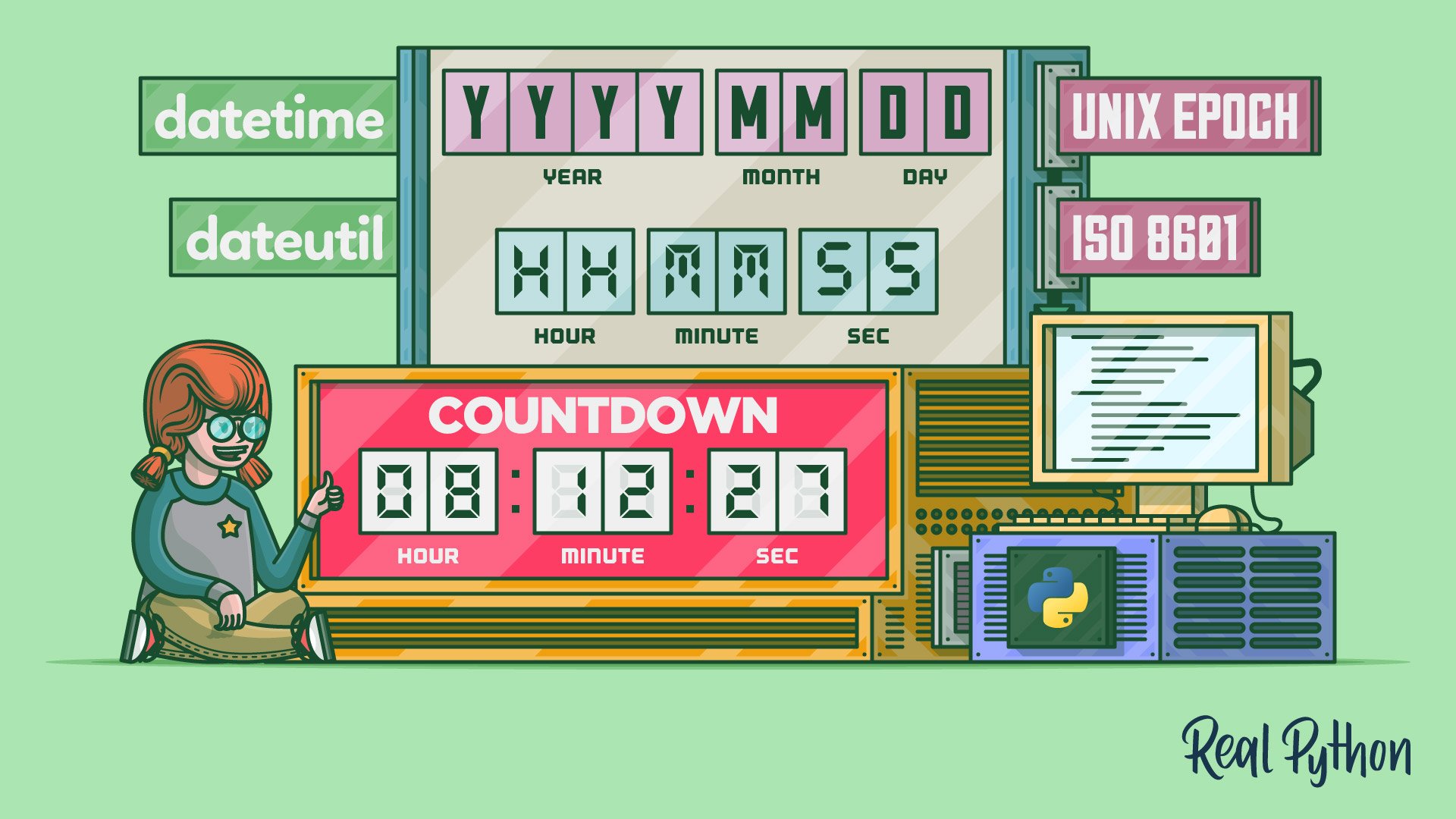
Doing Arithmetic With Python datetime
Doing Arithmetic With Python datetime 관련
Python datetime instances support several types of arithmetic. As you saw earlier, this relies on using timedelta instances to represent time intervals. timedelta is very useful because it’s built into the Python standard library. Here’s an example of how to work with timedelta:
from datetime import datetime, timedelta
now = datetime.now()
now
#
# datetime.datetime(2020, 1, 26, 9, 37, 46, 380905)
tomorrow = timedelta(days=+1)
now + tomorrow
#
# datetime.datetime(2020, 1, 27, 9, 37, 46, 380905)
In this code, you create now, which stores the current time, and tomorrow, which is a timedelta of +1 days. Next, you add now and tomorrow to produce a datetime instance one day in the future. Note that working with naive datetime instances, as you are here, means that the day attribute of the datetime increments by one and does not account for any repeated or skipped time intervals.
timedelta instances also support negative values as the input to the arguments:
yesterday = timedelta(days=-1)
now + yesterday
#
# datetime.datetime(2020, 1, 25, 9, 37, 46, 380905)
In this example, you provide -1 as the input to timedelta, so when you add now and yesterday, the result is a decrease by one in the days attribute.
timedelta instances support addition and subtraction as well as positive and negative integers for all arguments. You can even provide a mix of positive and negative arguments. For instance, you might want to add three days and subtract four hours:
delta = timedelta(days=+3, hours=-4)
now + delta
#
# datetime.datetime(2020, 1, 29, 5, 37, 46, 380905)
In this example, you add three days and subtract four hours, so the new datetime is at January 29 at 5:37 AM. timedelta is very useful in this way, but it’s somewhat limited because it cannot add or subtract intervals larger than a day, such as a month or a year. Fortunately, dateutil provides a more powerful replacement called relativedelta.
The basic syntax of relativedelta is very similar to timedelta. You can provide keyword arguments that produce changes of any number of years, months, days, hours, seconds, or microseconds. You can reproduce the first timedelta example with this code:
from dateutil.relativedelta import relativedelta
tomorrow = relativedelta(days=+1)
now + tomorrow
#
# datetime.datetime(2020, 1, 27, 9, 37, 46, 380905)
In this example, you use relativedelta instead of timedelta to find the datetime corresponding to tomorrow. Now you can try adding five years, one month, and three days to now while subtracting four hours and thirty minutes:
delta = relativedelta(years=+5, months=+1, days=+3, hours=-4, minutes=-30)
now + delta
#
# datetime.datetime(2025, 3, 1, 5, 7, 46, 380905)
Notice in this example that the date ends up as March 1, 2025. This is because adding three days to now would be January 29, and adding one month to that would be February 29, which only exists in a leap year. Since 2025 is not a leap year, the date rolls over to the next month.
You can also use relativedelta to calculate the difference between two datetime instances. Earlier, you used the subtraction operator to find the difference between two Python datetime instances, PYCON_DATE and now. With relativedelta, instead of using the subtraction operator, you need to pass the two datetime instances as arguments :
now
#
# datetime.datetime(2020, 1, 26, 9, 37, 46, 380905)
tomorrow = datetime(2020, 1, 27, 9, 37, 46, 380905)
relativedelta(now, tomorrow)
#
# relativedelta(days=-1)
In this example, you create a new datetime instance for tomorrow by incrementing the days field by one. Then, you use relativedelta and pass now and tomorrow as the two arguments. dateutil then takes the difference between these two datetime instances and returns the result as a relativedelta instance. In this case, the difference is -1 days, since now happens before tomorrow.
dateutil.relativedelta objects have countless other uses. You can use them to find complex calendar information, such as the next year in which October the 13th falls on a Friday or what the date will be on the last Friday of the current month. You can even use them to replace attributes of a datetime instance and create, for example, a datetime one week in the future at 10:00 AM. You can read all about these other uses in the dateutil documentation.